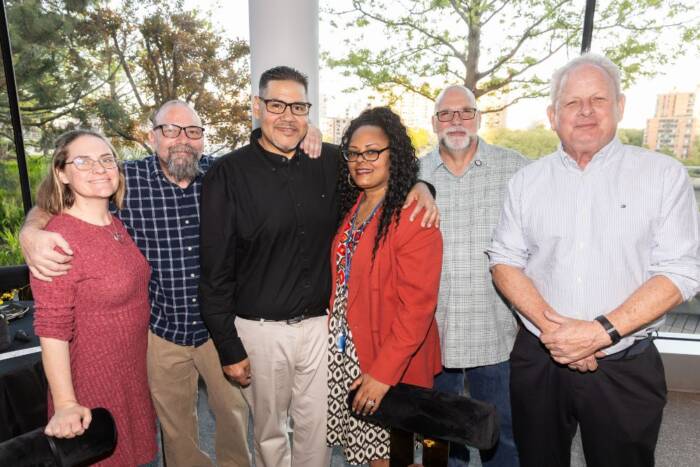Concepts emerge for planned Welch Hall renovation
by ZACH VEILLEUX
In the university’s early years, it was a grand space where scientists gathered for meals, study and discussion. More recently it has served as storage for archived journal volumes and office space for the library’s staff. But if new plans — under development since last year — proceed, Welch Hall’s restored library may again be known as one of the university’s central gathering spots.
Welch Hall, constructed in 1929, has long served as the university’s library and also housed its main dining facility until the Weiss Research Building opened in 1971. But with scientists turning primarily to their own computers for scientific literature, the building, with dramatic ceilings and sweeping views of the river, has become something of a forgotten gem in recent years. It is also in need of maintenance. “Welch Hall today is run-down, out of code and not well utilized,” says George Candler, associate vice president for planning and construction.
Paul Nurse has been interested in recapturing the space since he became president, and the university’s other construction projects — the building of the Collaborative Research Center just north of Welch and the expansion of the animal facility at the southwest corner of the campus (see “LARC Annex designs completed,” below) — provide an opportunity to bundle a Welch Hall renovation into the financing and permit process already under way with those projects.
Last year, the university evaluated several architectural firms with expertise in both restoration and library design and selected R.M.Kliment & Frances Halsband Architects to work on Welch. Kliment & Halsband were tasked with surveying the conditions of the existing structures and designing plans for restoring the building and surrounding gardens, modernizing the library and creating a scientific “commons” to better serve the research needs of today’s scientists. A library restoration committee of faculty, administration, library staff and students was formed to advise the architects.
A number of shortcomings were discovered during architects’ review of the building, including insufficient egress capacity, inadequate plumbing, poor accessibility for the disabled and extensive water damage to the metal anchors that secure the building’s façade. (The gardens on either side of Welch have been closed due to the danger of falling masonry.) Some of these deficiencies would need to be addressed even if the building was not fully renovated.
“In addition to their work on-site, the architects have developed some concepts for what a restored Welch Hall might look like, and we have begun to assess those designs in terms of costs,” says Mr. Candler. “Once we have estimates, it will be up to the university’s leadership to determine in which direction we proceed.” If a concept is finalized this winter, a completed design could be ready about a year later and construction could begin in 2009.
In the meantime, a Welch Hall renovation plan will be reviewed, as have been the plans of the CRC and LARC annex, by the city planning commission, which must approve the plans before permits can be issued and construction work can begin. “It’s important that the planning commission consider all three projects because they are concerned in part with the net expansion of square footage on the entire campus,” Mr. Candler says.




